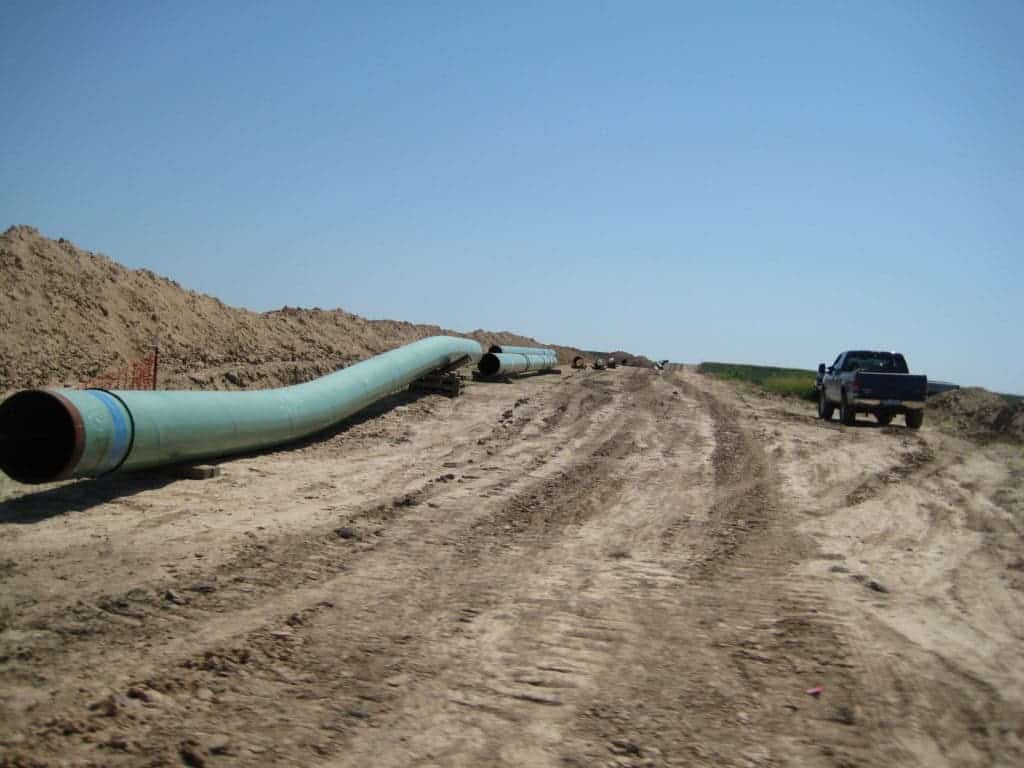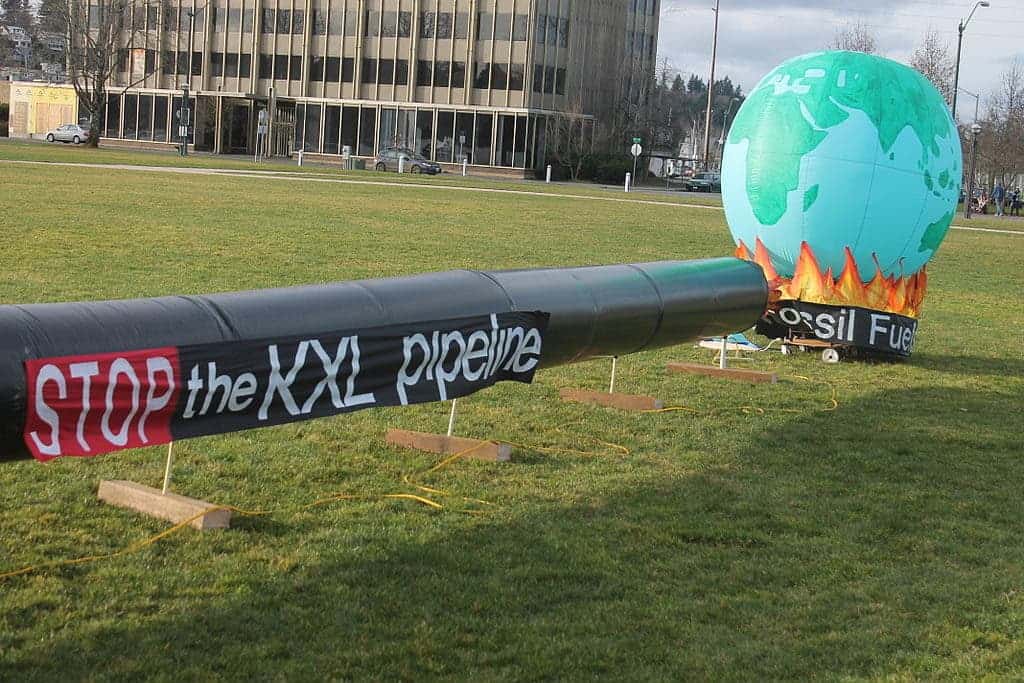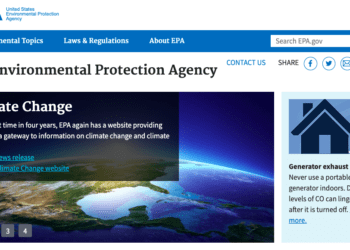US President Donald Trump has signed orders smoothing the path for the controversial Keystone XL and Dakota Access oil pipelines despite serious environmental and social concerns.

The Keystone Pipeline System is basically an oil pipe network in Canada and the United States, running from sedimentary basins in Alberta, Canada all the way to refineries in Illinois and Texas and oil tank farms in Oklahoma. Following vast protests (more on that a bit later on), the project was rejected by President Obama — but now, it’s been given the green light again.
Staying true to his quest of dismantling his predecessor’s legacy, Trump has issued an order allowing TransCanada Corp (the company responsible for the project) to reapply for a permit. Ironically, his quest for making America great again and ensuring energy stability involves increasing imports of crude oil — imports which had significantly dropped in previous years.
“It goes to show we as a nation build infrastructure that is part of a comprehensive energy plan to make our energy secure,” Republican Senator John Hoeven of North Dakota told Reuters.
Environmental issues

The US has taken steps to reduce its environmental impact in recent years, becoming a vital part of global climate negotiations. As Obama put it in 2015, the Keystone XL became a symbolic issue. He said that “frankly, approving this project would have undercut [the United States’] global leadership” on climate change. For starters, the problem with this pipeline is that it encourages the production and transport of oil sands petroleum, which has 17% higher greenhouse gas emissions than conventional oil. So not only does Keystone mean that more oil will be produced and used, but it’s the bad type of oil.
But even more importantly, the pipeline would traverse highly sensitive terrain, subjecting it to significant risks. The pipeline would run over the Ogallala Aquifer which spans eight states, provides drinking water for two million people, and supports $20 billion in agriculture. An oil spill would be devastating for the economy and the people who rely on the aquifer. Of course, TransCanada Corp has issued statements that there is no risk of a spill, but University of Nebraska professor Dr. John Stansbury conducted an independent analysis which found otherwise.
“We can expect no fewer than 2 major spills per state during the 50-year projected lifetime of the pipeline. These spills could release as much as 180 thousand barrels of oil each,” he said.
Furthermore, the time needed to shut down the pipeline and prevent the leak from spreading would be much larger than the corporation claims. The same applies to the intervention time.
There were also concerns about the structural integrity of the pipeline. TransCanada applied to the U.S. government to use thinner steel and pump at higher pressures than normal — and when you add that the pipe passes through an active seismic zone, that’s a bit unnerving.
The economic benefits of the pipeline were also brought into question. While it was expected to create some jobs during its construction phase, that phase would only last for 1-2 years. According to the Final Supplemental Environmental Impact Statement (SEIS), the Pipeline will only create 35 permanent jobs.
Aside from all this and conflicts of interest, the pipeline would also be passing through indigenous territories. Indigenous communities were gravely concerned about the potential damage the pipe could cause to their community and also oppose it passing through their sacred territories. Local fish, which are vital to the diet of many such communities, are in particular vulnerable to oil spills.
Protests and cancellation

The project sparked numerous protests. In 2011, several thousand environmentalist supporters formed a human chain around the White House to convince Barack Obama to block the controversial Keystone XL project. But that was just the start. In 2013, approximately 35,000 to 50,000 protesters attended a rally in Washington, D.C. However, it all peaked at the site, not in Washington.
At one point, nearly 10,000 people of which 4,000 were army veterans had flocked to federal land in North Dakota. The protests were fiery and even turned violent at some points, prompting local tribes to reportedly ask protesters to go home. The project was scrapped, and it seemed that was the end of it. But it wasn’t.
Reviving the Keystone
The oil industry cheers as Trump brings back Keystone. The North Dakota Petroleum Council was thrilled and applauded the decision.
“We think this is a great step forward for energy security in America,” said Ron Ness, the council’s president.
Shares went up for TransCanada, as they did for ETP — the company building the 450,000 barrel-a-day Dakota pipeline. But here’s an interesting fact: Trump has owned shares in ETP since at least mid-2016. Furthermore, ETP’s chief executive, Kelcy Warren, donated $100,000 to his campaign. So Trump essentially wrote an order to make more money and help the people who supported him in his campaign.
Meanwhile, environmentalists, scientists, and indigenous communities are scrambling.
“What happened today is an attack on our homes,” said Jade Begay, a spokeswoman for the Indigenous Environmental Network, which fights against mining and dumping on native lands.
“We are going to continue to show up at your home, Donald Trump.”
The Standing Rock Sioux said they would fight the orders.
“Americans know this pipeline was unfairly rerouted towards our nation and without our consent. The existing pipeline route risks infringing on our treaty rights, contaminating our water and the water of 17 million Americans downstream,” said Dave Archambault II, chairman of the Standing Rock tribe.
You can’t drink oil
Alas, there is little hope for success. If President Trump stays true to his campaign promises, he will do everything within his power to encourage America’s fossil fuel industry, regardless of the costs and the damage to Americans and to the planet’s climate.
Yet with so much money for his campaign coming from the oil industry and with oil people in such high positions in the Trump cabinet, one can’t help wonder if Trump is a real president or rather like a football player T-shirt: representing the people who paid to get him there.






